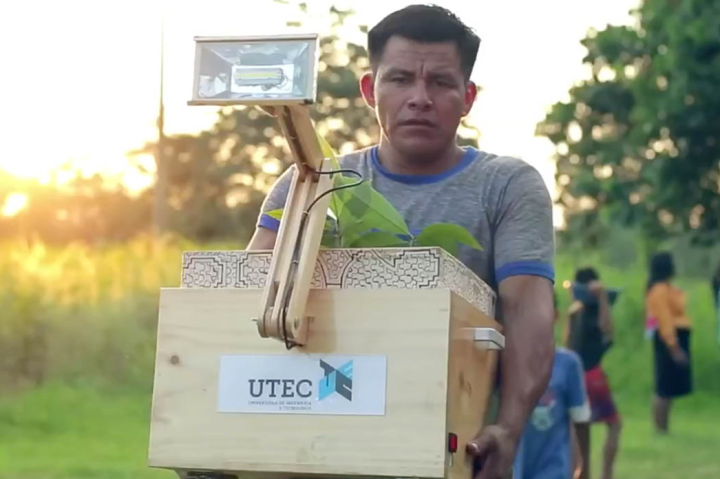
Motivated by a shortage of available electric energy, the researchers in Peru are exploring plants, one of their country’s most abundant natural resources, as a source of energy. The first plant-powered device they built is a small lamp that uses a low-power consumption, high-illuminated LED bulb for light. In its current form, the plant lamp is able to provide up to two hours of light each day.
Power for the plant lamp is obtained from the nutrients and bacteria that are contained within the soil that houses the plant. The energy-generating system designed by the UTEC team is able to harvest these soil-based plant nutrient materials and convert them into a usable form of electric energy. The plant light unit is larger than a typical lamp, but small enough that it can be carried to different places within a house.
The researchers have built 10 prototypes of the Plant lamp and are sending them to the Peruvian residents of Nuevo Saposa, a small community in Ucayli that has little to no access to a source of electricity. What this community does have is a vast area of lush vegetation that can be used to power the lamp. “We made proper use of the Amazon region’s own natural resources such as the soil and plants, in harmony with the environment without any impact whatsoever on the forest,” said Elmer Ramirez, head of the plant lamp research team and a professor of Energy and Power Engineering at UTEC.
The researchers believe their plant-powered lamp will make a difference in Nuevo Saposa and other communities where electricity is scarce. The team hopes their lamps will make it easier for students to do school work in the late afternoon and evening hours. It also will provide light for artisans and other workers who, thanks to the light, can continue to be productive even when the days grow short.



